First, the San Francisco Opera mounted its final fall production, a revival of Francesca Zambello’s 2019 staging of Georges Bizet’s evergreen Carmen on Wednesday, November 13th. Two days later, at the tiny ODC Theater, the flourishing Ars Minerva presented the modern-day world premiere of La Flora, composed by Antonio Sartorio (1630 – 1680, he died before the opera was finished) and completed by Marc’Antonio Ziani (c. 1653 – 1715), with libretto by Novello Bonis.
A co-production between the San Francisco Opera and Washington National Opera, the well-traveled Zambello’s production was based on an earlier Royal Opera House Covent Garden and Norwegian National Opera co-production. It updated the setting to Seville around the time of the opera’s premiere in 1875, instead of the 1820s. This revival strikingly boasted two US debuts and a role debut amongst the principals, in addition to a house debut for the American conductor Benjamin Manis.
Making her American debut, French mezzo-soprano Eve-Maud Hubeaux joined a long list of esteemed Carmen interpreters on the War Memorial stage (after all, the opera is the fourth most-presented work in the company’s history behind Giacomo Puccini’s Big Three) with her mercurial take of the titular role. Tall, beautiful, and elegant, her Carmen exuded equal parts of confidence and cool indifference, almost as if she had no cares for the world. Without resorting to gratuitousness, here was a full-fledged woman living by her own rules, making sense of Carmen’s defiance in the final two acts. While she might lack a coquettish factor for Act I to some, particularly for the “Seguidille,” she solidly characterized Carmen throughout the opera as a marginalized person with an ideal. Poor, maybe, but not broken.
Hubeaux’s voice, if anything, was even more impressive. Armed with perfect French diction and great phrasing, her considerable sound felt warm and velvety to my ears, with a robust and well-supported middle register that moved up the stave with ease. Being a native French speaker also made her a natural in her dialogues, which she projected with total clarity. Furthermore, playing with various colors, the voice also emanated sensuality and self-assurance without being overly vain. If I might nitpick, only the low parts of “Habanera” seemed to trip her a bit on Wednesday, as they tended to get swallowed by the orchestra.
Two years after the self-professed Puccini tenor Jonathan Tetelman made his house debut in Giuseppe Verdi’s La traviata, the Chilean-American tenor gave an absorbing performance as the naïve soldier Don José in his very Italianate role debut, particularly in the “Flower Song.” With a ringing register and marked dynamics in his voice, he detailed Don José’s act-by-act gradual decline in fate sonically and physically. It was truly fascinating to see how far his acting skills had progressed since Alfredo Germont just two short years ago!
He wholeheartedly presented a well-defined and totally believable character, befitting the fact that Don José was the opera’s central figure and, as musicologist Winton Dean put it, “[it] is his fate rather than Carmen’s that interests us.” Tetelman also established a great rapport with Hubeaux, and the juxtaposition between his fiery passions and her calm, composed demeanor provided the show with a much-needed push-pull drama that was riveting to watch. The final scene, in particular, continued building until it reached its feverish climax with Carmen’s death—indeed an edge-of-the-seat moment for the audience!
Four years after her scheduled American debut with the company (as the title role of George Frideric Handel’s Partenope revival), British soprano and the 2017 Dame Joan Sutherland Audience Prize winner at the BBC Cardiff Singer of the World competition Louise Alder finally landed at War Memorial stage making triple-debut (US, Company, and role) as the chaste village maiden Micaëla. With bright and lyrical equipment, she easily traversed Micaëla’s music, and her showstopper Act III aria, “Je dis que rien ne m’épouvante,” turned out to be, indeed, showstopping. Nevertheless, her personification of the role might be problematic for some, as her Micaëla proved to be neither innocent nor angelic as the role is usually played. While on its own, it was a sensible interpretation, presenting Micaëla as a full-grown woman with desires and feelings, but the contrast between her and Carmen became lesser. And as a result, it lessened the impact of Don José’s downfall. Next spring, Alder will return to the Bay Area to tackle Cleopatra in Handel’s Giulio Cesare in Egitto with the English Concert, a role that should match her temperament more fittingly!
Christian Van Horn completed the principals as the toreador, Escamillo, performed with enough swagger and panache. Van Horn, who had performed in various operas at the War Memorial stage throughout the years, imbued the role with a booming voice and commanding presence, and his entrance high on the horse — an 18-year-old Gypsy Vanner gelding named Drogen — most certainly turned heads. On Wednesday, his low notes on the tricky “Toreador Song” unfortunately tended to get overwhelmed by the Orchestra.
In the minor roles, Carmen showed why SF Opera’s Adler Fellowship was one of the most prestigious in the nation, as they were filled with all-around successes from top to bottom. Mezzo-soprano Nikola Printz and soprano Arianna Rodriguez were a dynamic duo as Mercédès and Frasquita, drawing much laughter from the audience for their banters and, mainly, the Act II quintet with Carmen, Christopher Oglesby’s Dancaïre and Alex Boyer’s Remendado, which was performed with great comic timing. Samuel Kidd and James McCarthy completed the ensemble as the playful Moralès and stern Zuniga, respectively.
Manis picked a quick tempo throughout, which worked well to move the story, especially with this youthful cast. He was sensitive to the needs of the singers and maintained great clarity throughout the opera. Bizet’s brilliant instrumentation, particularly for the dance numbers, came alive in his hands. SF Opera Chorus, under director John Keene, similarly brought excitement in taking various roles as needed by the opera.
In describing the original production five years ago, I used the adjective “tame” to describe the overall output. While that adjective was still appropriate for elements of this revival, this time, the production felt much more present and engaging, undoubtedly also due to the total commitment of the whole cast. Anna Maria Bruzzese was brought in to serve as Associate Director and Choreographer for these performances as she was when the production was seen in Washington in 2022. I felt her contributions helped shape the staging, upping the sense of danger and menace and improving the interactions and movements of everybody on stage. The flamenco-based dance sequence for Act II, “Les tringles des sistres tintaient,” was undoubtedly more entertaining and electrifying than before. Tanya McCallin’s new set design also helped change the production’s look and feel.
This was a great Fall season closer for the San Francisco Opera, and I was glad to see that last Wednesday’s performance was sold out and that all the remaining performances are of “limited availability.” The audience was evidently enjoying themselves and gave the cast great applause, particularly for Hubeaux and Tetelman. Six more performances remain, including a performance on Tuesday, November 26, that will feature Adler Fellow Thomas Kinch, who mesmerized as Melot in Tristan und Isolde last month, as Don José.

Two days later, I moved back in time and traded 1820s Seville with the 1681 Venice Carnival, the time when La Flora was performed for the first and only time, and never again till Ars Minerva revived it last Friday. La Flora was the ninth opera that Ars Minerva revived annually since Daniele de Castrovillari’s La Cleopatra in 2015, the brainchild of Ars Minerva’s Founder and Executive Artistic Director — and this production’s director — Céline Ricci. I have been religiously attending their productions (missing only two so far) as I think they are of a worthy cause to support, and those operas give a better understanding of the Opera’s origins. I even reviewed their 2018 production, Giovanni Porta’s Ifigenia in Aulide, which coincidentally also featured Printz (the Mercédès above) as Agamennone.
Sartorio was an Italian composer active in his native Venice and, interestingly, in Hanover, Germany. In 1665, he served as Kapellmeister to Duke Johann Friedrich of Brunswick-Lüneburg, a position that he held for ten years (while still returning frequently to Venice to compose operas for the Carnival) until he won the position of vice maestro di cappella of the prestigious Basilica di San Marco. He began writing La Flora in early 1680 and soon fell ill. Considering the opera was supposed to open the Venetian Carnival season, Ziani was brought in to finish the work. The opera opened on December 26 or 27 the following year at Teatro Sant’Angelo, and Sartorio passed away four days later.
The fictional plot for La Flora, not to be confused with an opera of the same name by Marco da Gagliano and Jacopo Peri in 1628, draws from the historical figures during the era when the Roman Republic began its descent into civil war. The dictator Silla has put down a rebellion with the help of his young general Pompeo (aka Pompey the Great, later on) and planned to marry his daughter Emilia (even though she’s already married to Servio) to Pompeo. Pompeo himself is in love with Flora, who accidentally stumbles upon Pompeo’s father, Strabone, and incites his wrath. Fearful of his father, Pompeo denies Flora and creates an on-again-off-again relationship with her throughout the opera. Meanwhile, Pompeo’s friend Geminio, who is in love with Flora, complicates the matter.
Cast in three acts, La Flora mainly revolves around the relationship between Flora and Pompeo and Servio’s efforts to raise a coup against his father-in-law, who forces him to divorce Emilia. Servio is unfortunately mortally wounded by Pompeo halfway through Act II after his attempt to recruit Geminio doesn’t bear fruits, and his revenge plans are found out. Even by 17th-century standards, the plot is strikingly eventful, so no wonder Ziani was hired to complete the opera. In my humble opinion, only the twist at the end doesn’t make sense by contemporary opera world standards.

Musically, La Flora represents a transitional opera. While the structure of the opera still mostly followed the earlier Venetian conventions à la Claudio Monteverdi, in terms of dependency of recitatives most of the (short) arias involved florid coloratura passages, the hallmark of Baroque operas by Handel, Nicola Porpora and Johann Adolph Hasse, to name a few. Furthermore, while La Flora employed a small orchestra mainly consisting of strings, here performed by two violins and two violas, a continuo section with a harpsichord, played by the conductor Matthew Dirst, a cello, and a theorbo, strikingly, the opera also featured an instrument that Sartorio was well known for: the trumpet. The instrument appeared at the key moments, anticipating arie d’imitazione later on. In addition, despite the music’s being written by two composers, there was no noticeable change of style throughout the opera and it seamlessly blended the styles of both composers.
As before, Ars Minerva assembled a small cast of primarily excellent local Bay Area singers for this opera, many of whom had performed in previous productions. In the title role, soprano Aléxa Anderson easily navigated Flora’s tessitura while looking like a million bucks as the only character in this show with multiple costume changes. Jasmine Johnson’s Pompeo was sufficiently docile, both in acting and in her sound, until the last minute. Mezzo Nina Jones dazzled with her effortless coloratura as the scheming Geminio. At the same time, Aura Veruni, in the emotionally complex role of Emilia which is marked by constant changes of anger and sadness, fully embodied the role with both her vocal and her acting. Tenor Sidney Ragland gave a dignified reading as Strabone, Pompeo’s father, with his resonant sound while still being funny enough for Strabone’s more comic moments. Maxwell Ary stole the scenes each time with his perfect comedic timing as Probo, Flora’s assistant (or, in this production, “gay BFF”). Unfortunately, on Friday, Wayne Wong noticeably missed a line or two in his delivery as the dictator Silla.
In her direction, Ricci found a parallel between the story and modern-world “political machinations” as she transferred the setting to modern-day Rome, both in Entropy’s projections of office buildings in Rome overlooking the churches and in Marina Polakoff’s modern office attire for the characters. She also brought out the almost slapstick aspect of the story, nearly as if to point out the ridiculousness of (any) politics. Such interpretations made a lot of sense, and they didn’t distract much from the story. (Servio’s rebellion could manifest into office backstabbing that happened daily, for example.) Ricci’s depiction of Flora as a socialite, with various costumes straight from the fashion shows, was truly a stroke of genius, and the use of three stage crews that changed the props in the dark, coupled with projection changes, effectively allowed for seamless scene changes.
All in all, it was indeed a tremendous effort to produce such a rarity, and Ars Minerva deserved a round of applause for continuing to “bring forgotten music back to life.” It saddened me to see that such a beautiful show was not well attended on Friday, and I was hoping the situation improved during last weekend. I, for one, definitely look forward to appreciating more forgotten operas with them in the future!
Photos: Cory Weaver
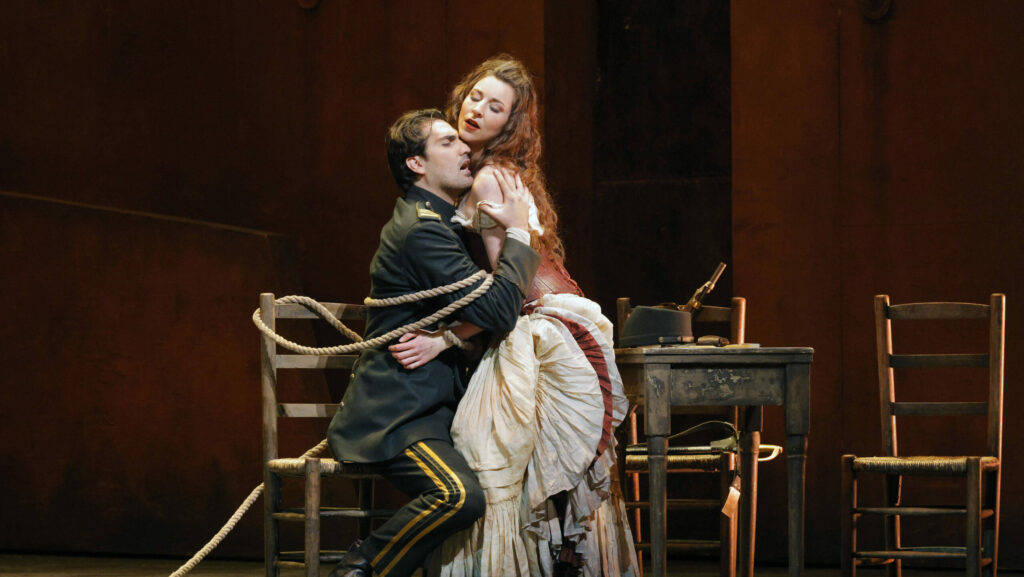
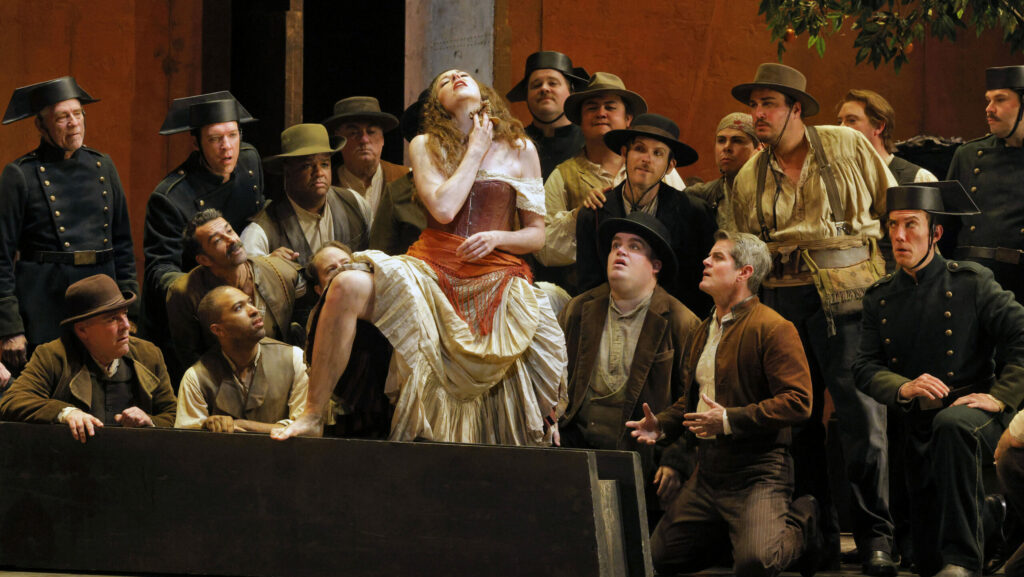
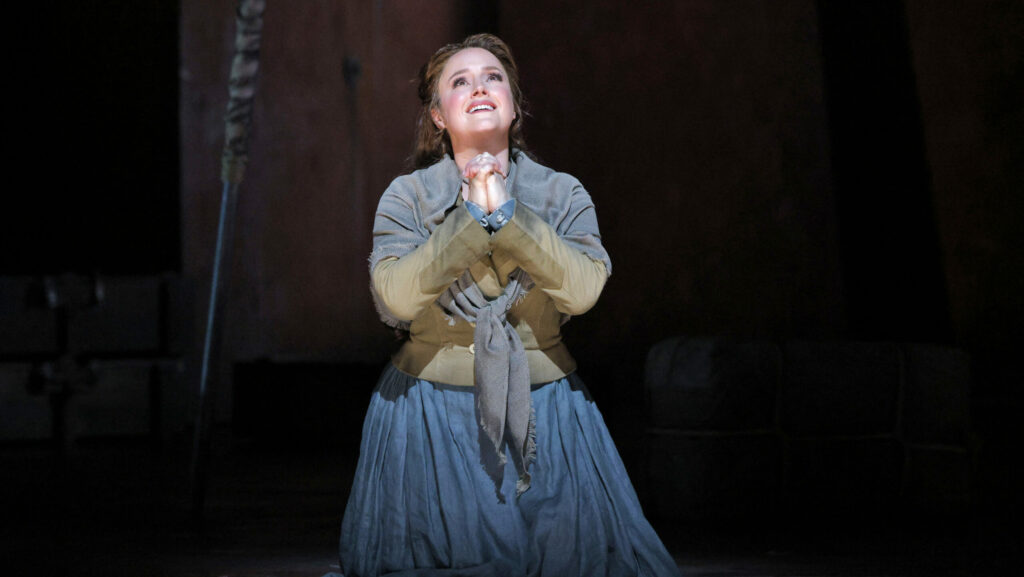
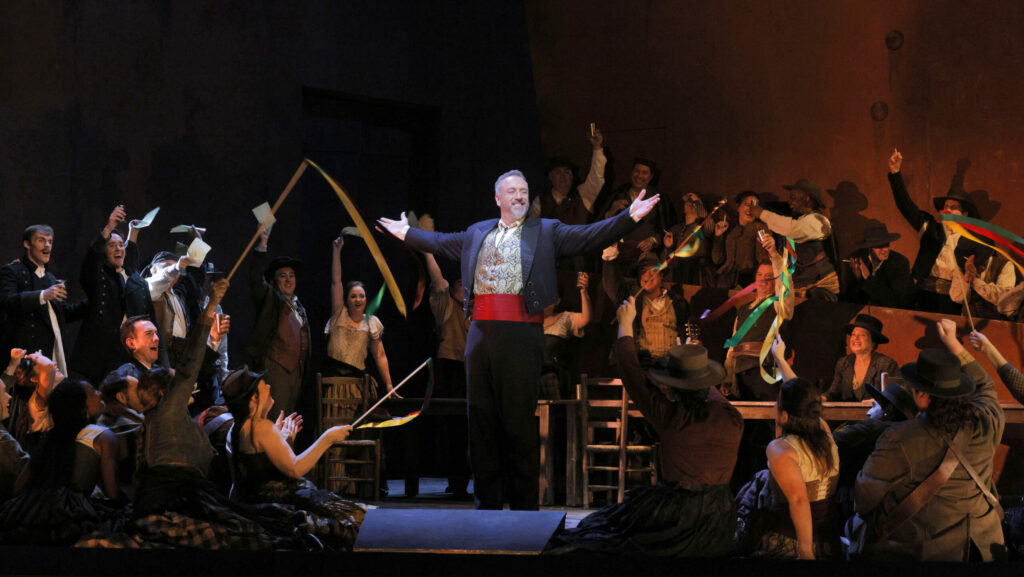

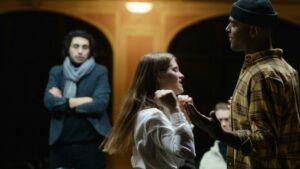
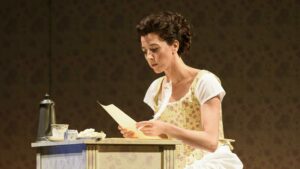


Comments